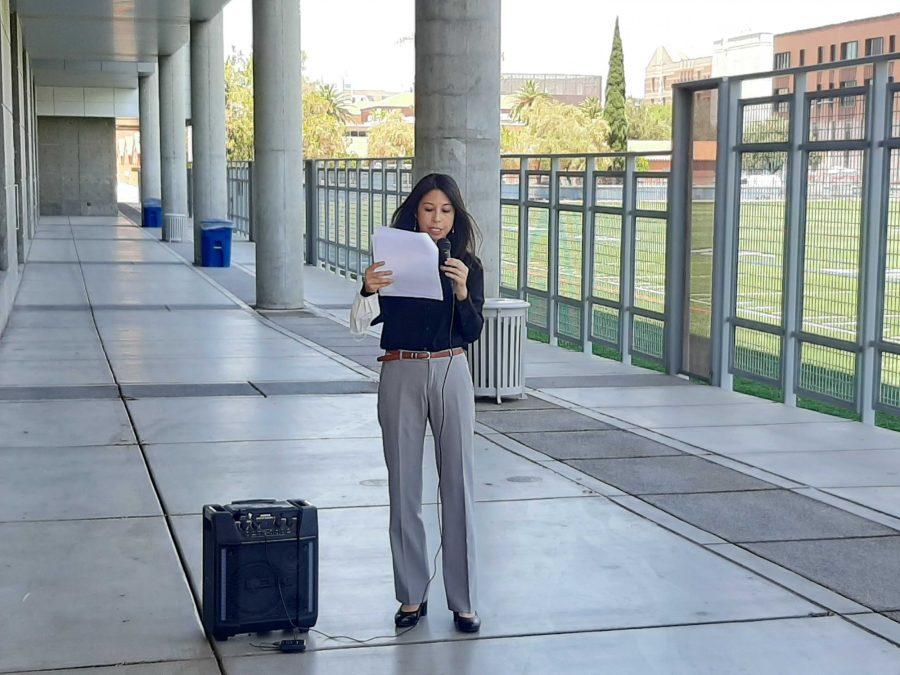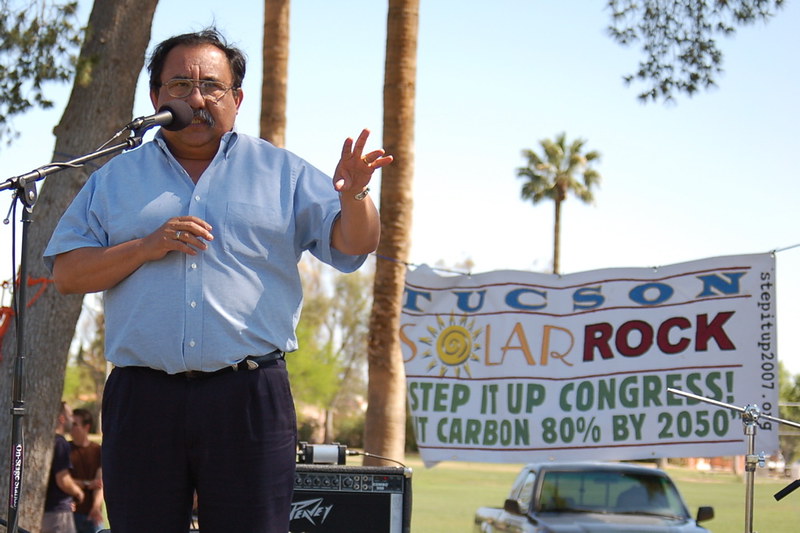Immediately following the University of Arizona Reentry Task Force weekly update Thursday, the Coalition for Academic Justice at UArizona hosted a press conference on the university campus at 11 a.m. to voice their concerns on the UA’s employee furlough plan.
“We feel that sometimes our voices have not quite been heard, and so we are taking this to you — the media and the public,” said Celeste González de Bustamante, an associate professor at the School of Journalism and a member of the CAJUA Steering Committee.
RELATED: Arizona sees increased ICU usage, upward trend of COVID-19 cases
CAJUA members spoke about their dissatisfaction with the current furlough plan and outlined a new one, as well as the many layoffs or non-renewals from the university and a reentry survey.
The coalition originally formed after the first furlough plan was announced in April, and they sent a letter expressing their concerns along with a petition that received about 3,000 signatures to UA President Dr. Robert C. Robbins, according to Gonzalez de Bustamante. The coalition now includes approximately 200 members throughout the university.
Gonzalez de Bustamante said CAJUA members believe “there has been a critical lack of transparency in the university’s COVID-19 response in terms of financial contingencies and safety concerns.”
Speakers at the conference also said they felt UA administration was not being completely forthcoming with the layoffs, or non-renewals, as a result of financial pressure due to COVID-19.
“Now, of course, officially the UA is pursuing a plan that avoids layoffs through furloughs,” said David Mondy, a former lecturer in the English department who was recently laid off along with 29 of his colleagues, “which is curious because over 70 faculty and staff have already been laid off and we could easily project that number could rise.”
According to Mondy, the majority of the layoffs come from departments and organizations on campus specifically built to aid students, including the UA’s award-winning writing program, which has had significant success in increasing the retention of Hispanic and first-generation students, as well as the Thrive Center and THINK TANK.*
“Let’s think about how these layoffs affect the students,” Mondy said.
TC Tolbert, another person laid off from their job at the university, said s/he was concerned the members of the UA and greater Tucson communities were getting “punked.”
“I think President Robbins and his team are insisting that the U of A’s furlough and flex plans are ‘progressive,’ that they’re somehow an ‘exercise in teamwork,’ that we’re somehow ‘in this together’ — and, yes, I’m quoting — and that they prioritize students and the most vulnerable,” Tolbert said. “But I am here to call doublespeak on that. It is absolutely not true.”
RELATED: Campus reentry update: Reentry Task Force discusses importance of research
Tolbert spoke negatively on the layoffs and pay cuts to those with some of the lowest salaries, citing that Robbins’ yearly housing allowance was greater than Tolbert’s salary.
“I’m saying to President Robbins, take that $70,000 [housing allowance] and fund two positions, two full lives, and then you pay your own housing,” Tolbert said.
Tolbert also said administration’s claims that they were looking for input from faculty and staff members was not true, and that layoffs will increase class sizes and decrease access to healthcare during the pandemic.
“This is not about student safety, this is not about student success,” Tolbert said.
Members of CAJUA then presented an alternative to the current UA furlough plan, which Pierre Lucas, a UA professor of Materials Science & Engineering, said was “inequitable, overestimated and unnecessary.”
Lucas said the coalition is not against a furlough plan in general, but against this particular furlough plan, which he called “very extreme.”
This proposed furlough plan includes and increased pay cut from 20% to 30% for the highest earning administrators.
“Our top 30 administrators accumulate a salary of $10.6 million,” Lucas said. “So we just want this category of very high earners to contribute a little more.”
However, Lucas also said CAJUA did not believe a furlough plan was even necessary, as the current plan was built based on projections of a dramatically decreased student population, which has not been the case.
“Enrollment of freshmen is up in almost all the colleges, so why are we even on furlough?” Lucas said. “One of the potential answers is it would seem that we are probably covering some questionable financial decisions that have been made prior to the pandemic.
Finally, Duarte Diaz, a professor in the Department of Animal and Comparative Biomedical Sciences, said CAJUA has created a questionnaire to gauge how faculty and staff feel about the reentry into campus, which currently has included about 1,200 participants.
Diaz said CAJUA was concerned with faculty and staff voicing opinions without retaliation and having a say in campus reentry as a whole.
“Where we consistently get frustrated is when we hear these statements that faculty, staff and students — we’ve asked them what their opinions are, we’ve gotten information from them,” Diaz said. “The vast majority of us … have never heard from them.”
Diaz said there was only a single two-question survey asking about general campus reentry. Other members of CAJUA also echoed the sentiment that they have had difficulty getting in touch with administration to properly voice their concerns.
To watch the who press conference, visit CAJUA’s Facebook page. To watch the most recent Reentry Task Force update, visit the UA’s YouTube channel.
*Editor’s note: One organization was removed to better reflect the current state of layoffs at the university.
Follow Sam Burdette on Twitter








